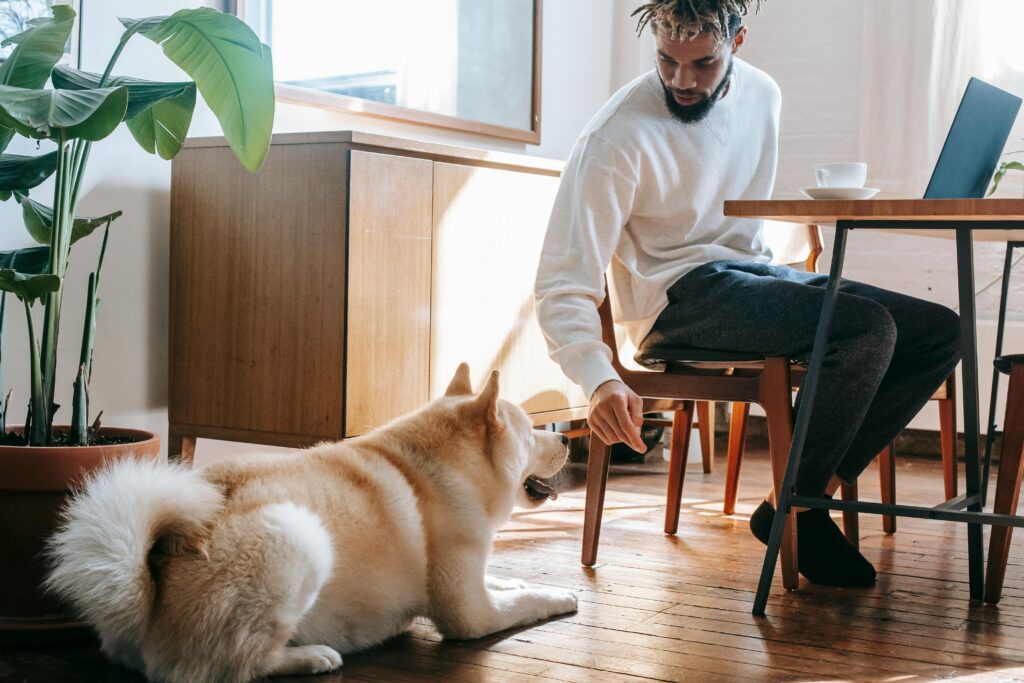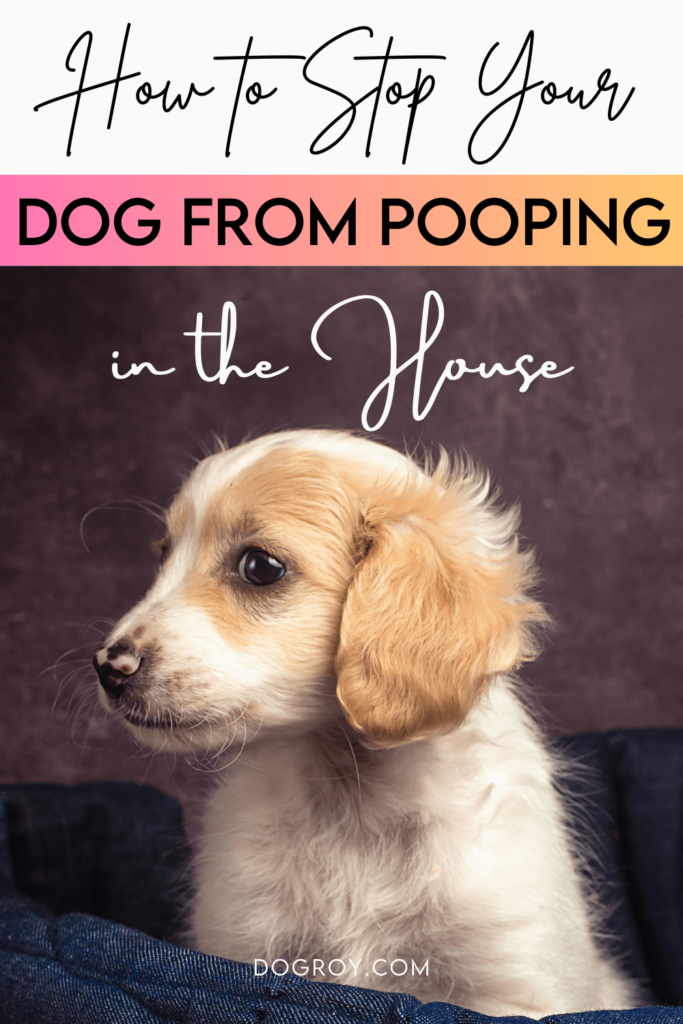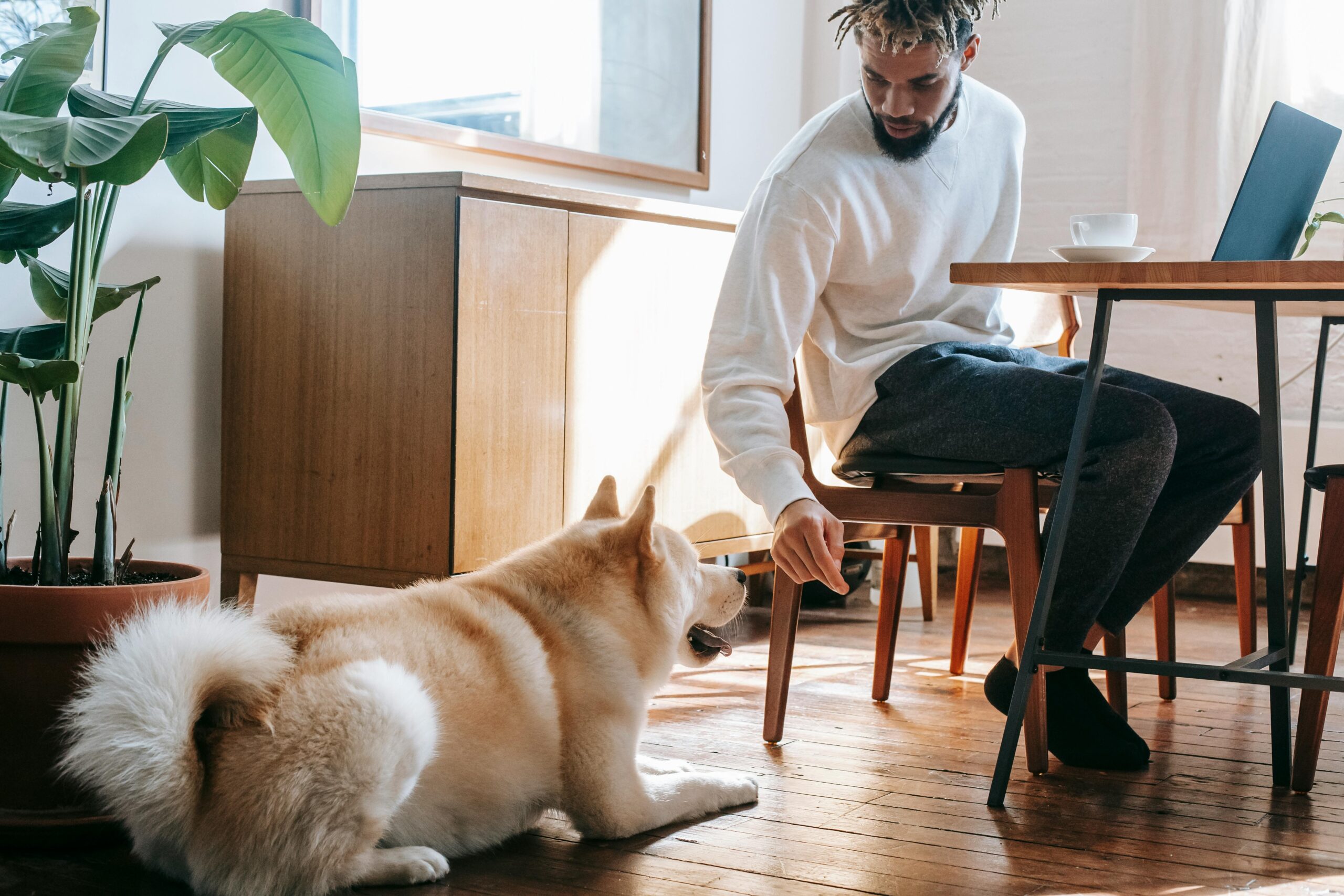Dealing with a dog that consistently poops in the house can be a frustrating challenge for pet owners.
The good news is that with the right strategies, you can overcome this issue and create a cleaner, more comfortable living environment for both you and your furry friend.
In this guide, we’ll explore effective techniques and offer practical advice on How to Stop Your Dog from Pooping in the House, providing you with the tools to address and resolve this common canine behavior.
Table of Contents
12 Friendly Tips on How to Stop Your Dog from Pooping in the House

1] Understand Your Dog’s Schedule
Ever tried decoding your furball’s daily routine?
Dogs are creatures of habit, and understanding their schedule is like having a magic wand for potty training.
Recognize those bathroom break patterns after meals or waking up, and you’ll be the maestro guiding them to the perfect potty performance spot, reducing those indoor oopsie-daisies.
2] Regular Outdoor Breaks
A doggy door to success!
Frequent outdoor breaks are fundamental to successful potty training.
Taking your pup outdoors regularly, especially after meals and the morning wake-up call, is like setting the stage for a blockbuster performance.
A consistent outdoor routine reinforces good behavior, making accidents more of a rare cameo than a regular feature in your home.
Tip: “Consistent breaks set the stage for successful outdoor potty behavior.”
3] Praise for Outdoor Success
Who’s a good boy?
Celebrate those outdoor potty wins with a standing ovation of praise and treats!
Positive reinforcement is the golden ticket to creating a doggie association between outdoor potty parties and receiving tasty rewards.
This positive reinforcement not only strengthens the bond between you and your dog but also encourages the development of good bathroom habits.
4] Create a Designated Potty Area
In the canine world, clarity is key! Establishing a specific outdoor potty area is like putting up neon signs for your furry friend.
The scent in this chosen space becomes a language your dog understands, signaling, “This is the place!” Consistency in this designated area turns your yard into their personal VIP bathroom lounge.
Clear signals and a designated potty spot contribute to a more effective and efficient potty training process.
5] Monitor Indoor Behavior
Ever played detective with your dog?
Watching for signs like restlessness, circling, or sniffing indoors is like having a crystal ball.
Spot these cues, and you’ll be a step ahead, whisking your dog outdoors before they even think about an indoor adventure.
Staying one step ahead helps prevent accidents and reinforces the connection between appropriate elimination and outdoor spaces.
Tip: “Recognition of signals allows proactive guidance to the designated outdoor potty area.”
6] Effective Cleaning
Accidents happen – cue the cleanup crew!
Use pet-friendly enzymatic cleaners to wipe the slate clean (literally).
These magic potions erase the scent of past accidents, making your home less appealing for repeat performances.
Proper cleaning not only maintains a clean living environment but also aids in breaking the cycle of indoor soiling.
7] Consistent Feeding Schedule
Establishing a consistent feeding schedule for your dog contributes to a predictable bathroom routine.
Regular meals create a rhythm in their digestive system, making it easier for you to anticipate when they need to go outside.
Consistency in feeding times enhances the predictability of bathroom habits, allowing for effective scheduling of outdoor breaks.
8] Adjust Meal Timing
Aligning meal timing with your dog’s bathroom needs is a strategic approach to potty training.
Consider feeding your dog earlier in the evening, providing ample time for digestion and an outdoor break before bedtime.
This adjustment reduces the chances of indoor accidents during the night, aligning their feeding schedule with their natural elimination patterns.
In the synchronization of needs and breaks, indoor accidents take a backseat
9] Create a Comfortable Crate Space
Welcome to the canine sanctuary – aka the crate!
Dogs typically avoid soiling their living spaces, making a comfortable crate an effective tool for potty training.
Introduce the crate as a safe space for your dog when you’re unable to supervise.
This not only prevents accidents but also encourages them to wait for outdoor breaks.
Gradual crate training with positive associations ensures that the crate becomes a secure and comfortable retreat for your dog.
10] Routine Vet Check-ups
Time for a health check!
Regular vet visits ensure your dog is tip-top. Sometimes, house soiling is like sending an SOS about an underlying health issue.
Ensure your dog is in good health, ruling out any medical conditions that might contribute to changes in their elimination patterns.
Regular veterinary care supports overall well-being and aids in maintaining optimal bathroom habits.
11] Address Anxiety and Stress
Let’s create a spa day for your pup – minus the cucumbers!
Addressing stress and anxiety is like turning your home into a Zen garden.
Calm environments promote positive bathroom habits, and your dog will thank you for the tranquility.
Provide mental stimulation through interactive toys, engage in relaxing activities, and ensure your dog feels secure in their living space.
A stress-free environment positively influences their bathroom habits and contributes to a more successful potty training experience.
Tip: “A stress-free environment contributes to successful outdoor potty training.”
12] Consult a Professional Trainer
Need a director for your potty training blockbuster?
Enter the professional dog trainer!
These experts assess your dog’s script, identify challenges, and provide personalized strategies.
It’s like having a personal coach to guide you through the challenges of potty training, ensuring a happy ending for both you and your furry star.
How to Stop Your Dog from Pooping in the House: FAQs
Can adult dogs be trained to stop indoor pooping?
Absolutely! Adult dogs can be trained using positive reinforcement and consistent strategies. Patience and understanding your dog’s needs are crucial for success.
Is punishment effective in stopping indoor pooping?
Avoid punishment, as it can create fear and confusion. Positive reinforcement is more effective in encouraging desired behavior and creating a positive association with outdoor potty breaks.
How long does it take to stop indoor pooping?
Training timelines vary, but consistent efforts can lead to improvement within a few weeks. Individual factors, such as your dog’s age and previous habits, may influence the duration.
Should I consult a vet if my dog continues indoor pooping?
Yes, consult a vet to rule out any medical issues contributing to indoor pooping. A vet can provide guidance on addressing potential health concerns and ensure your dog’s overall well-being.

Conclusion:
Putting an end to your dog’s indoor potty habits is entirely achievable with a bit of patience and the right approach.
By implementing the tips provided in this guide on How to Stop Your Dog from Pooping in the House, you’ll be on the path to a cleaner home and a happier coexistence with your beloved pet.
Remember to remain consistent, use positive reinforcement, and celebrate the progress along the way, as you guide your dog toward more appropriate bathroom habits and a healthier living space.





